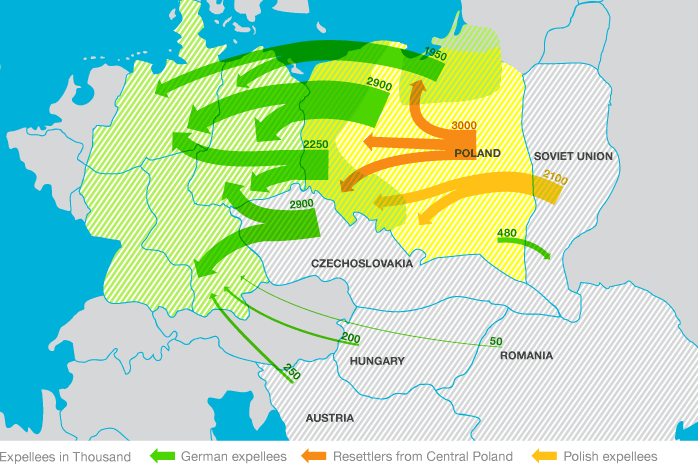



Introduction
One of the great tragedies of the 20th century was the forced expulsion of ethnic Germans from their ancestral homes in Europe after the end of World War II. The Allies carried out the largest forced population transfer—and perhaps the greatest single movement of people—in human history. A minimum of 12 million and possibly as many as 18.1 million Germans were driven from their homes because of their ethnic background. Probably 2.1 million or more of these German expellees, mostly women and children, died in what was supposed to be an “orderly and humane” expulsion.
One estimate of the number of Germans expelled runs to 16.5 million: 9.3 million within the 1937 Reich borders and 7.2 million outside. The Germans within the 1937 Reich borders include 2,382,000 East Prussians, 1,822,000 East Pomeranians, 614,000 in Brandenburg east of the Oder, and 4,469,000 Silesians. The Germans outside the 1937 Reich borders include 240,000 in Memel and the Baltic States, 373,000 in Danzig, 1,293,000 in Poland, 3,493,000 in Czechoslovakia, 601,000 in Hungary, 509,000 in Yugoslavia, and 785,000 in Romania. The Russians did not expel many of their 1.8 million Volga Germans from the Soviet Union; instead, the Volga Germans were predominantly deported to other (distant) locations within the Soviet Union.
Expulsions of Germans after World War II (Part I)
https://codoh.com/library/document/6785/
Expulsions of Germans after World War II (Part II)
https://codoh.com/library/document/6820/


